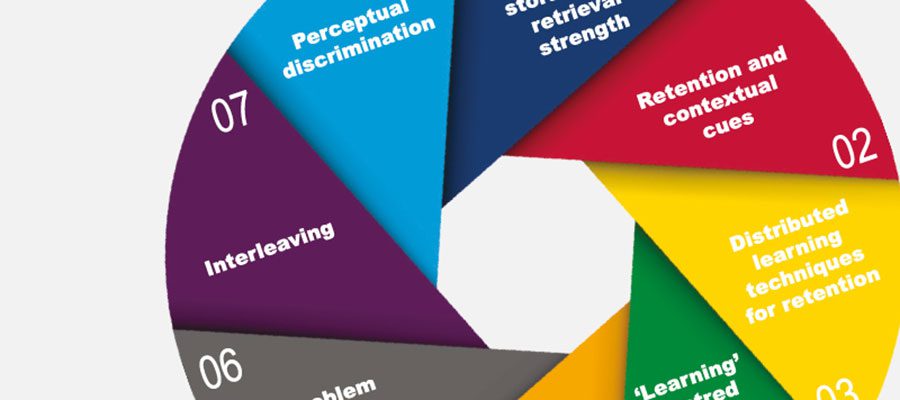Perceptual thinking serves to shift mindsets away from traditional, linear forms of taking on information in favour of innovative methods in order to maximise learning retention.
By manipulating the type, delivery, frequency of information to better suit the needs of individuals, perceptual thinking can serve to ensure that employees are retaining and using the information they need to know in a more effective way.
1 Storage and Retrieval Strength
Simply, storage strength and retrieval strength can be defined as:
- RETRIEVAL – SHORT TERM MEMORY
- STORAGE – LONG TERM MEMORY
By testing yourself on information that you need to know quickly and regularly, your retrieval strength will improve. Similarly, testing yourself on information that you need to know but not necessarily all the time over an extended period will enable you to improve your storage strength.
2 Retention and Contextual Cues
By reinstating the environment and cues of your original learning when it comes to learning it a second, third or fourth time, you are more likely to retain it long term.
3 Distributed Learning Techniques
Innovative methods like microlearning and e-learning are proven to improve retention by allowing individuals to learn in short bursts in a flexible manner.
4 ‘Learning’ Centred Testing Philosophies
Testing yourself often is a more effective way of learning than merely recalling information out loud. In addition, giving yourself difficult yet accomplishable tasks to complete will ensure that you are retaining information long term.
5 Incubation
By making specific conclusions from generic information and making broad generalisations from specific observations, employees can generate problem-solving solutions.
6 Percolation
The Zeigarnik Effect explains how unfinished or interrupted tasks are more likely to be retained at the front of one’s mind, meaning they are more likely to complete tasks and set clear goals. In terms of workplace development, percolation utilises the Zeigarnik Effect to encourage you to think of new solutions to industry problems.
7 Interleaving
Interleaving works by delivering relevant information in different orders to ensure that you fully understand its context and can recall it in any given format.
8 Perceptual discrimination
Perceptual discrimination works by exposing individuals to new ways of learning the same information in order to ascertain the most effective method. In doing this, it will become optimise specific learning experiences.


